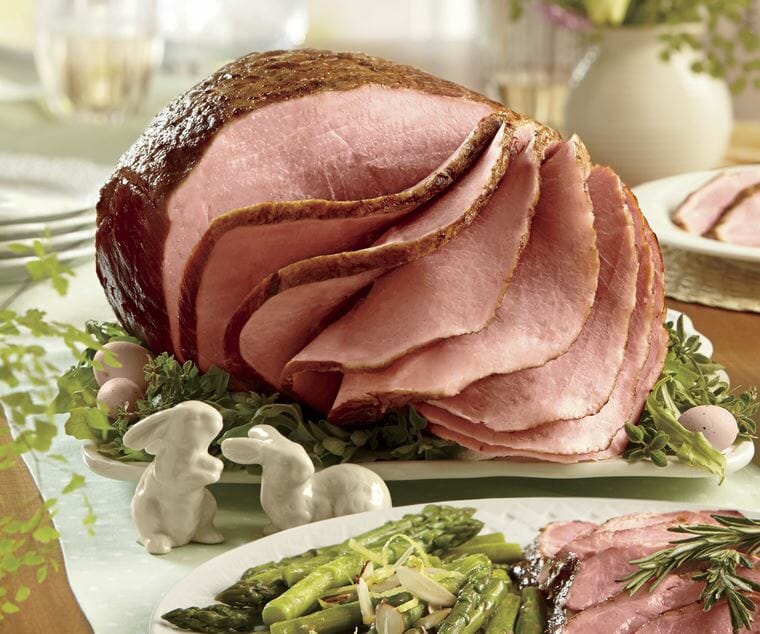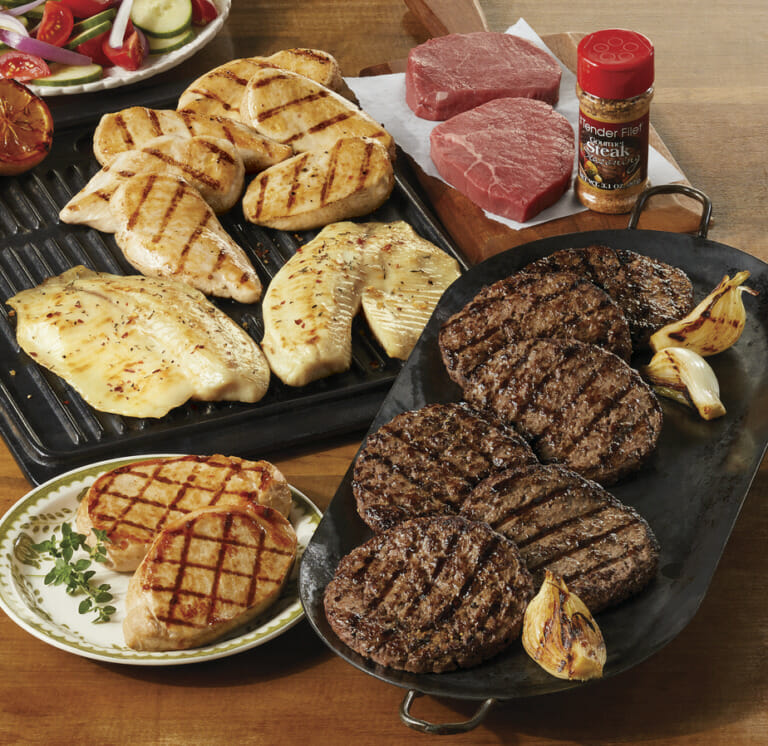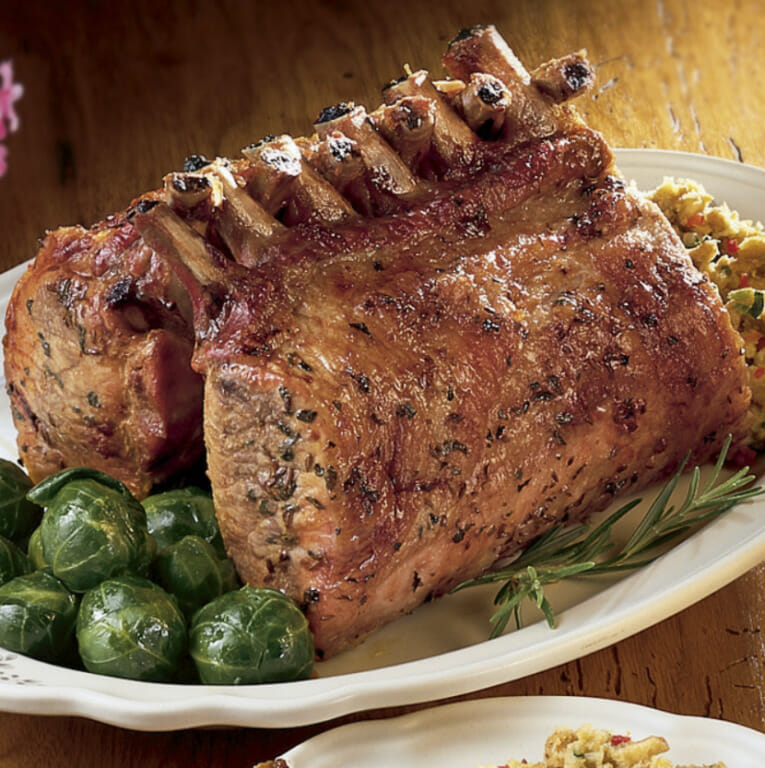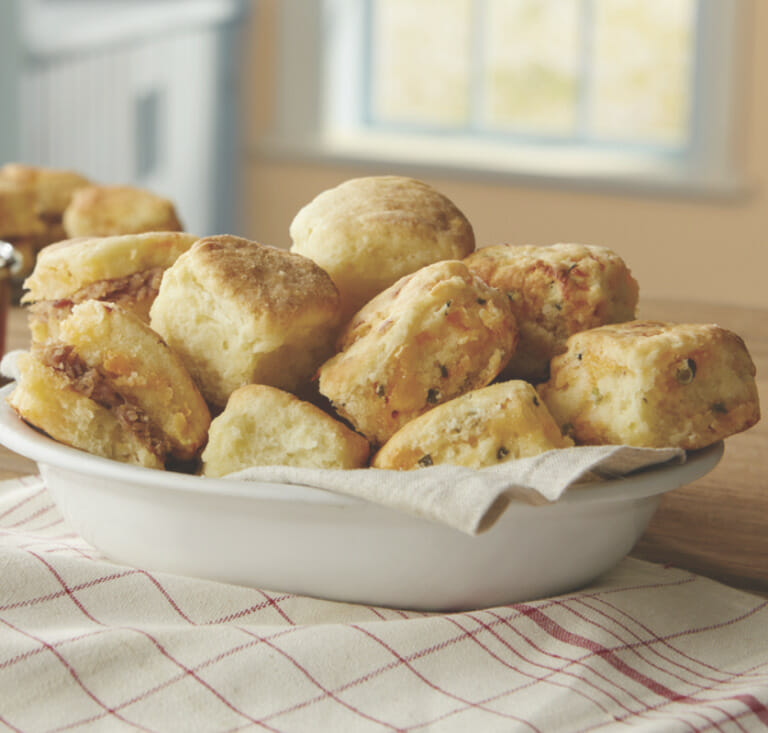How to Cook a Ham Everyone Will Love for Easter Brunch
Learn how to cook a ham for Easter brunch, along with healthy recipes using nutritious spring vegetables.
No matter how you slice it, a delicious, salty ham is the perfect main course for Easter brunch: a crowning centerpiece surrounded by a feast of vegetables, salads and desserts. Offering ham for brunch guests is a great choice to feed a crowd because it is easy to prepare—just heat and serve! You can even serve it at room temperature, allowing for more time to concentrate on preparing delicious side dishes that complement a savory ham.

Buying a Ham
Hams are available smoked, glazed, pre-sliced, bone-in, and boneless. Each ham has a serving guide so you know what size to buy based on the number of people you are feeding. In general, plan on four to five servings per pound from a boneless ham, or three servings per pound for a bone-in ham. If you like to make soup, a bone-in ham is an excellent choice for a scrumptious pot of split pea soup the next day. Otherwise, choose a ham that best meets the needs of your event.
Many hams come pre-glazed with a sweet or savory sauce. If you choose to doctor the ham with your own glaze, or stud the ham with fruit and cloves, there are many recipes to choose from at allrecipes.com.
How To Cook a Ham
To bake a cured ham, place it in a shallow roasting pan in order to catch drips from the coating, and especially if you are basting the ham during the last 20 minutes of baking with your own sauce. Bake at 325 degrees. For hams that weigh more than eight pounds, cover loosely with foil during the last half of baking so it doesn’t dry out. When the internal temperature reaches 140 degrees, the ham is warmed through and is ready to eat.
Recipes Using the First Vegetables of Spring
Try incorporating some the following veggies into your Easter brunch for an extra shot of nutrition and fiber. The nutrition website marksdailyapple.com gives a great overview of spring vegetables and their many health benefits.
Artichokes: Give another thought to this fun vegetable that offers high fiber, potassium, calcium, iron and phosphorus. How else can you serve artichokes other than steaming and dipping the tender leaves into melted butter? Seek out baby artichokes that can be cut in half and braised with chicken stock and white wine in this super easy healthy recipe.
Asparagus: This spring favorite is a superstar of vitamin K, which is important for bone health, and folate, which helps maintain a healthy cardiovascular system. Check out kalynskitchen.com for several outstanding asparagus preparations for Easter brunch. Here’s a unique salad that uses farro (substitute wheat berries or barley if whole grain farro is hard to find) and a zesty sun-dried tomato vinaigrette.
Avocado: Not technically vegetables but fruits, these first ripen on the West Coast in spring and are high in oleic acid and folate, along with health-promoting carotenoids. Eggs baked in avocado halves will be a show-stopper with this simple and healthy recipe.
Celeriac: If you want to feel full longer, add this fiber-filled vegetable to your recipe lineup. It also has high levels of vitamins C, K and B6, along with phosphorus, potassium, magnesium and manganese. Here’s a gratin recipe that may soon become your go-to side dish for comfort food meals. Jamie Oliver, famous British chef and champion of increasing vegetables in our diet, developed this hot dish featuring celeriac and potatoes, along with cheese and cream…yum!
Fennel: This licorice-scented bulb contains a blend of phytonutrients, making it a powerful antioxidant. Slicing it fresh in a salad paired with oranges, red onion and dry-cured black olives delivers a bright flavor to offset the other dishes on a brunch table. To learn about dry-cured olives, read here.
Fiddlehead Ferns: With a taste similar to asparagus, these are rich in iron and feature vitamins A (for eye health) and C. Seek out this unique vegetable at spring farmers’ markets and specialty produce vendors. All it takes is a quick sauce with butter and perhaps some garlic and you have a side dish ready in minutes!
Mustard Greens: A great source of calcium and vitamins K, A, C and many others, this superstar green adds flavor to a salad, or even a savory side dish. A wonderful accompaniment to Easter ham and other brunch sides, braised mustard greens takes some prep to trim and chop the greens. Nevertheless, based on the reviews for this Rachael Ray recipe, the effort you put in will be worthwhile!
Radishes: More than just a peppery crunch, these little gems have vitamin C and potassium. Typically eaten raw and often served on a vegetable platter, radishes can also be roasted with olive oil and salt, as they are similar to turnips. For more background on types of radishes and ways to eat and store them, visit freshorganicvegetables.com.
Vidalia Onions: All onions feature cancer-fighting flavonoids and more than one hundred sulfur-containing compounds…but Vidalias are special. Milder and sweeter than other onions, Vidalias can be featured in dips and casseroles such as this cheesy baked recipe. A short growing season is a great reason to use them often while you can.
Watercress: Historically used to treat many ailments, watercress is packed with beta-carotene and several other important vitamins. Usually, we see watercress in salads. Here’s a special chilled soup made with watercress and buttermilk that works great with Easter ham.
The next time you host brunch for a crowd, purchase a foolproof ham that provides immediate enjoyment and lots of leftovers. Get creative with healthy recipes that make excellent side dishes…and invite your guests to bring dessert!



